-
1 of 253523 objects
The Neptune centrepiece hallmark 1741/2
Silver gilt | 49.0 x 66.0 x 47.0 cm (whole object) | RCIN 50282
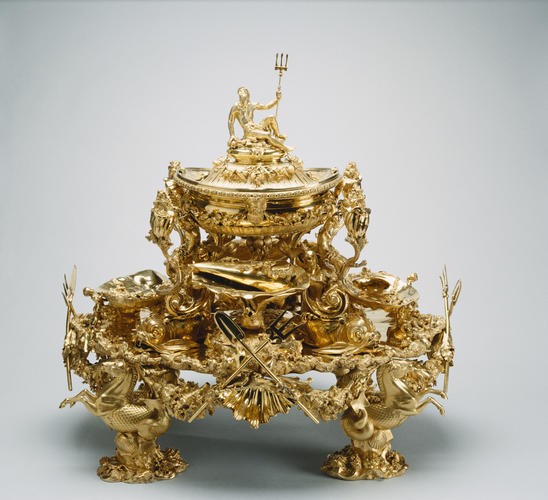
Attributed to Nicholas Sprimont (1716-71)
Master: The Neptune centrepiece Item: The Neptune Centrepiece hallmark 1741/2
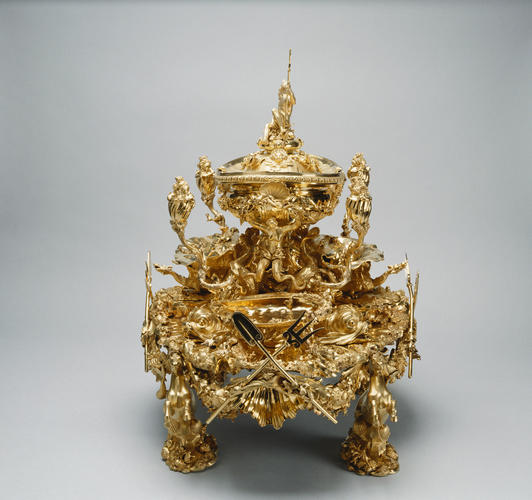
Attributed to Nicholas Sprimont (1716-71)
Master: The Neptune centrepiece Item: The Neptune Centrepiece hallmark 1741/2
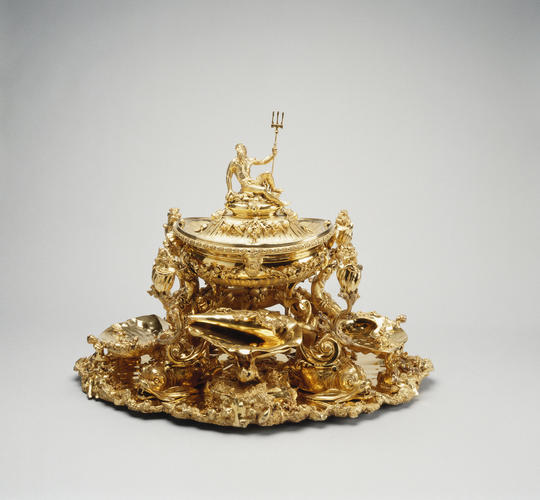
Attributed to Nicholas Sprimont (1716-71)
The Neptune centrepiece hallmark 1741/2
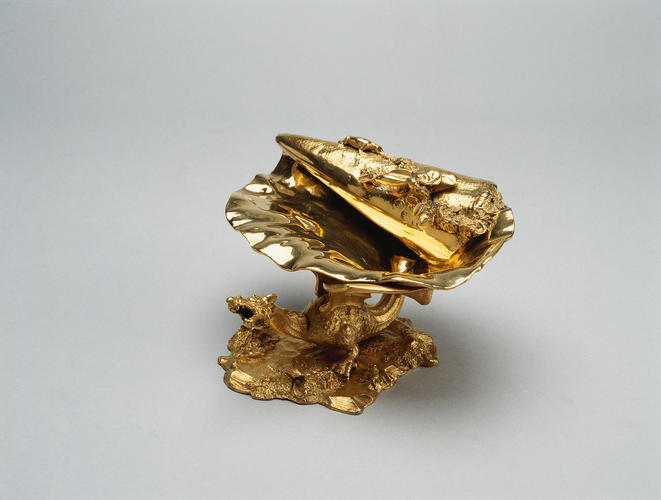
Attributed to Nicholas Sprimont (1716-71)
The Neptune centrepiece hallmark 1741/2

Attributed to Nicholas Sprimont (1716-71)
The Neptune centrepiece hallmark 1741/2
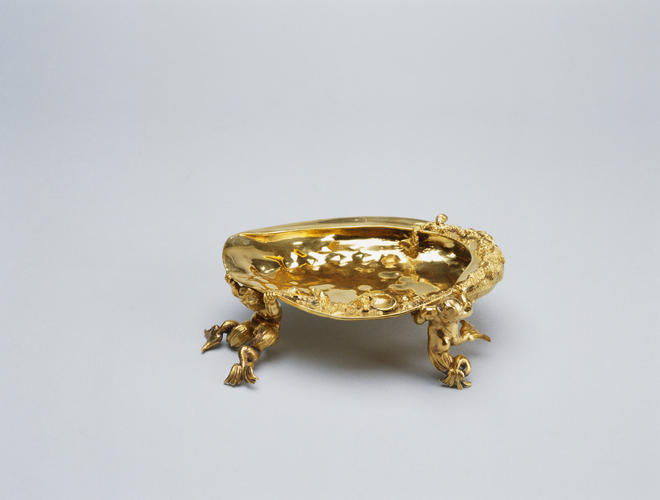
Attributed to Nicholas Sprimont (1716-71)
The Neptune centrepiece hallmark 1741/2
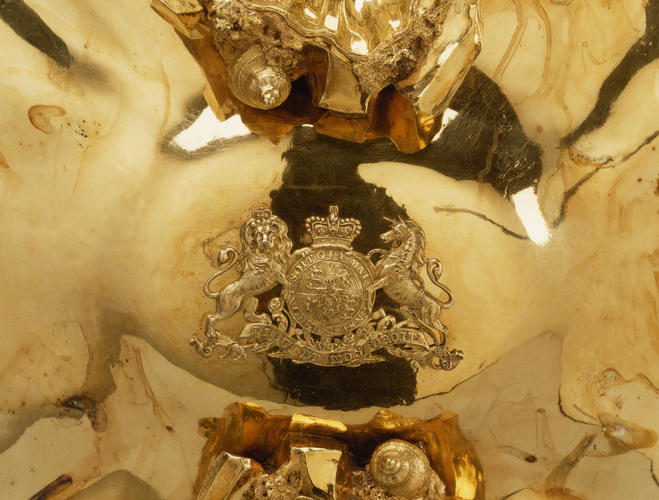
Attributed to Nicholas Sprimont (1716-71)
The Neptune centrepiece hallmark 1741/2
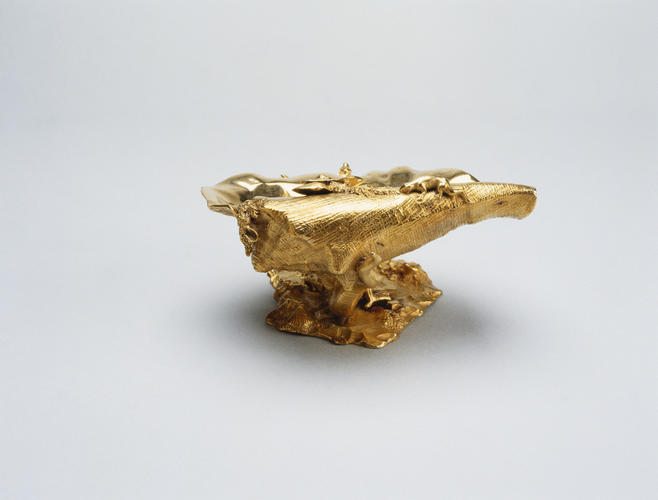
Attributed to Nicholas Sprimont (1716-71)
The Neptune centrepiece hallmark 1741/2
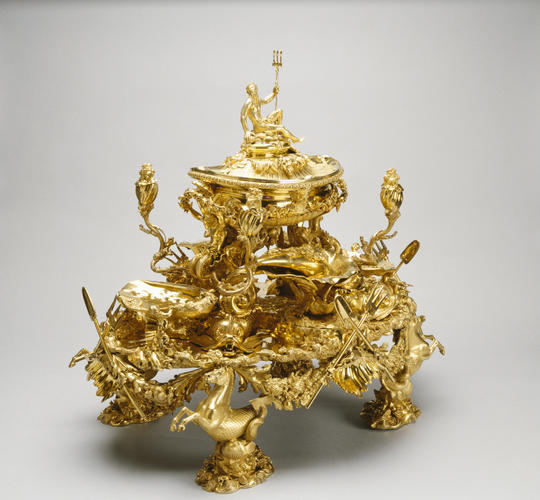
Attributed to Nicholas Sprimont (1716-71)
The Neptune centrepiece hallmark 1741/2









-
This object, which has been described as ‘the purest rococo creation in English silver’, was the centrepiece of a table service displaying the most advanced French taste of the period. The marine theme of the piece, with its Neptune finial, swags of shells and pieces of coral and detachable dishes in the form of abalone shells, suggests it was used to serve fish soups and seafood. The plateau on which the tureen sits, similarly decorated with shells, coral and small sea-creatures, resembles a beach from which the sea has retreated. Even the dolphins which entwine themselves around the supports for the tureen relate to the nautical theme, although these might also be a witty reference to the Prince of Wales, patron of the piece, as the English dauphin or ‘dolphin’.
Frederick’s household accounts record large quantities of fish consumed by the Prince, including turbot, sole, cod, salmon, trout, pike, carp, flounders, lobsters and shrimp. Oysters were one of the Prince’s favourites and were ordered by the barrel, either to be eaten alone or incorporated into other dishes. Traditionally the items of plate used to serve fish and soup were removed from the dining table after the service of the first course. However, this elaborate piece is likely to have remained throughout the meal – the nozzles modelled as sea-foam attached to the candle branches being removed in later courses to be replaced by candles for added illumination during the dessert course.
Although it has not been possible to trace the bill for the centrepiece in either the Duchy of Cornwall account books or the ledgers of George Wickes, goldsmith to the Prince, it was certainly in the Royal Collection by 1801, when it was recorded in the Warrant books undergoing repair. In the plate inventories of 1832 it appears under the heading ‘Frederick, Prince of Wales’ together with its accompanying sauceboats, stands and salts (RCIN 51271.1-4 and 51393.1-2).
Several theories as to the complicated history of the centrepiece have been posited. The object itself bears two contrasting hallmarks – one from Turin, dating from the 1720s, with the sponsor’s mark of Andrea Boucheron, the other from London, 1741/2, with the sponsor’s mark of the Huguenot goldsmith, Paul Crespin, who ran premises in Compton Street in Soho. The two marks make it clear that the work is an amalgam – a reusing of the Turinese silver incorporated into a later English work. This might explain the mismatched scale of the Neptune figure to the other decorative elements of the tureen. Based on stylistic similarities with other hallmarked works it has long been suspected, moreover, that a third hand was involved in the design and creation of this piece – that of the Liègeois goldsmith and founder of the Chelsea porcelain factory, Nicholas Sprimont. Sprimont appears to have arrived in London sometime in 1742 and did not enter an official mark at Goldsmiths’ Hall until 1743. He would not, therefore, have been able to sponsor the centrepiece, although his mark certainly appears on the other parts of the service to which it belongs (RCIN 51271.1-4 and 51393.1-2). It is possible that the two goldsmiths collaborated on the centrepiece, as fellow Huguenots, one simply sponsoring the work of the other, or dividing the work between them, or perhaps Sprimont working for his neighbour Crespin while anticipating his English hallmark.
It is possible that Charles Calvert, Lord Baltimore, was involved in the commission of the centrepiece and its accompanying wares. Baltimore’s taste for the rococo was more dramatic than Frederick’s – the interiors of his Surrey residence, Woodcote Park, displayed some of the most advanced French rococo taste of the day. Baltimore also worked on other artistic commissions for the Prince, supervising the creation of the Prince’s barge in 1732, for example, and his accounts reveal that he acquired works from both Crespin and Sprimont in 1743-4. In 1742, Baltimore was promoted to a Lordship of the Admiralty and it is possible that the marine service was a grateful gift to the Prince in return.
Text adapted from The First Georgians: Art and Monarchy 1714 - 1760, London, 2014Provenance
Almost certainly made for Frederick, Prince of Wales in 1741-2; the hippocamp base was added by Rundell, Bridge and Rundell for George IV, 1827 (£484 1s 7d); ; first recorded in the Royal Collection in 1801 (TNA, LC5/206)
-
Creator(s)
(goldsmith)(goldsmith)(goldsmith)(retailer/supplier)(nationality)Acquirer(s)